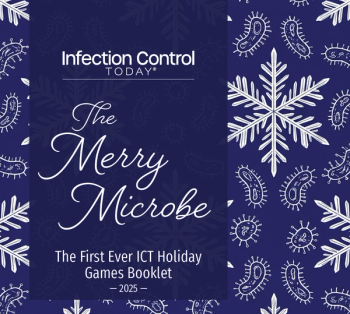
Study: Doctors’ Phones Too Often Contaminated by MRSA
Study: “These results strongly recommend routine daily cleaning of mobile phones for effective reduction of device contamination; moreover, medical staff should perform hand hygiene before and after using mobile phones.”
Mobile phones seem to be a real magnet for methicillin-resistant Staphylococcus aureus (MRSA) and physicians may be less vigilant than nurses when it comes to disinfecting their phones, according to a pre-print
Investigators with Hiroshima University in Japan looked 50 hospital-use only mobile phones from doctors and found MRSA on 5 of them (10% of the phones).
“In our hospital, shared computer keyboards and nurses’ mobile phones are cleaned daily with benzalkonium chloride containing wipes in each ward,” the study states. “However, doctor’s mobile phones are personal, and their cleanliness depends on personal habits. Several studies have reported that only few medical staff voluntarily disinfect their mobile phones. These results strongly recommend routine daily cleaning of mobile phones for effective reduction of device contamination; moreover, medical staff should perform hand hygiene before and after using mobile phones.”
Investigators also concluded that 222-nm ultraviolet (UV) light is enough to disinfect phones with MRSA and aerobic bacteria (AB) on them. Often, 254-mm UV light is used to disinfect hospital spaces but only unoccupied spaces, because that frequency can be harmful to the skin and eyes.
“In contrast, recent studies have shown that 222-nm UVC light, which is part of the far-UVC light (207–222 nm) spectrum, shares similar germicidal properties, but is less harmful to the skin and eyes than 254-nm UVC light,” the study states. “The studies together suggested that a 222-nm UVC disinfection device may be easier to use for routine device cleaning than a 254-nm UVC disinfection device in environments where patients and medical staff exist, such as nurse stations and patient rooms.”
The study was conducted from March to May 2020 at Hiroshima University Hospital, which is a 746-bed tertiary care facility.
“Although our sample size was small, the rate of MRSA contamination on mobile phones was found to be higher than that reported previously,” the study states. “The high contamination rate may be attributed to the mobile phones being used by doctors, rather than nurses. Several studies have shown hand hygiene compliance rates to be commonly lower among doctors than among nurses. Poor hand hygiene compliance may have led to the higher contamination rates on doctors’ mobile phones.”
Investigators note that their study has limitations starting with the small sample size. Also, “we only investigated the efficacy of 222-nm UVC disinfection on MRSA contamination of hospital-use-only mobile phones. We did not test the other equipment used in the hospital, such as computer keyboards.”
They did not investigate whether doctors cleaned their phones each day and generally followed hand hygiene guidelines. MRSA was the only multidrug-resistant organism that they tested the phones for.
“Finally, we did not investigate whether the MRSA contamination was brought on by doctors using the mobile phones,” the study states. “Therefore, we cannot ascertain whether the MRSA isolated from mobile phones originated from doctors, patients under their treatment, or from the wider hospital environment.”
Newsletter
Stay prepared and protected with Infection Control Today's newsletter, delivering essential updates, best practices, and expert insights for infection preventionists.






